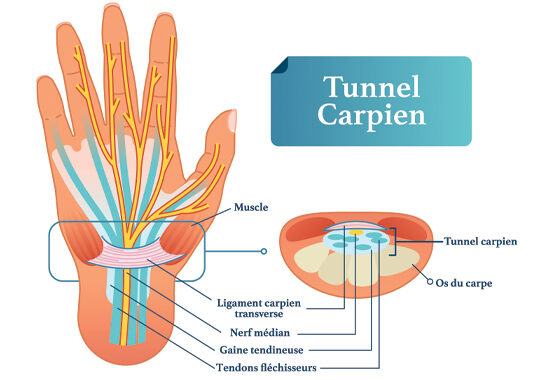Jobs most likely to cause carpal tunnel syndrome
Jobs that involve repetitive wrist movements, vibration, unnatural hand and wrist positions or strain can increase the risk of developing carpal tunnel syndrome. Here are some examples:
- Computer work, particularly data entry or programming
- Factory assembly or manufacturing work, especially with vibrating tools
- Construction trades (for example, carpentry or woodworking) that require the frequent use of hand tools such as hammers, saws and screwdrivers
- Jobs that involve operating heavy vehicles or using repetitive hand controls
Wrist and hand orthoses to treat carpal tunnel syndrome
A wrist and hand orthosis relieves pressure on the median nerve that runs through the carpal tunnel in the wrist. It is worn around the wrist to hold the hand and wrist in a neutral position, aligned with the forearm.
There are several types of orthoses. Some are rigid, some are soft. They should be tailored to each patient for proper fit and use.
Benefits of hand and wrist orthoses
A wrist and hand orthosis does not cure carpal tunnel syndrome, but it can relieve symptoms and help improve the patient’s quality of life. This type of orthosis reduces the pain, numbness and tingling associated with carpal tunnel syndrome.
Wrist and hand orthoses may be worn overnight to relieve symptoms during sleep.












